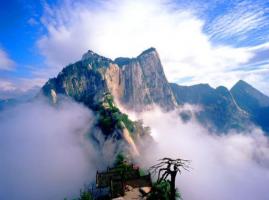Rough Roads but Glittering Architecture on the Silk Road in Uzbekistan
Uzbekistan is a fascinating central Asian country with a history that spans the opulence of the Silk Route through to the current environmental disaster of a barren Aral Sea, says John Henzell
Travelling to the most famous cities of the Silk Route has always required a degree of forbearance, but modern-day visitors can at least expect a much warmer welcome than many of their predecessors received.
In the fortress city of Khiva, tea is now served in the former slave market where hundreds of Russian settlers were sold into servitude after straying into areas controlled by Turkmen tribes. In Bukhara, the vermin-infested pit where two British officers were jailed then beheaded – they failed to show appropriate deference to the ruler – is now part of a museum. And in Samarkand, the gilded city razed by Genghis Khan’s raiders then rebuilt by Tamerlane to become the most famous Silk Route city of them all, a slightly shifty middle-aged man will wait until you’re alone then sidle up and ask: “Hey, do you want to climb the minaret?”
In return for a small denomination US dollar note, I was able to scramble up a tiny spiral staircase to the highest point of the Registan, the historic heart of Samarkand. Below me are the elaborately tiled facades of the three madrasas built around a central square by Samarkand’s rulers over a span of 250 years to create what was once one of the foremost places of learning in the world.
At a time when Europe was just beginning to emerge from the dark ages and the Islamic world was in the midst of its golden age of science and discovery, these were the Harvard or Oxford of their time – places to come to learn about everything from engineering to astronomy, medicine to architecture and Persian poetry to religious theory. Everything in front of me was because of the Silk Route, which was always far more than simply a conduit for trade between China and the Mediterranean. It was also for sharing ideas between east and west.
Of the dozens of city-states that became wealthy from the Silk Route, most are mere shadows of their former glory, having been either abandoned entirely after the Mongol raids of the 13th century, flattened by earthquakes or simply faded into decrepit obscurity. Through the vicissitudes of fate, Samarkand, Bukhara and Khiva – the three best-preserved Silk Route cities – are all in Uzbekistan and each has a distinctly different character.
The most famous and also the most accessible to tourists is Samarkand, with the Registan’s three madrasas dominating a public square which was the place for everything from royal proclamations to public executions. Samarkand was once famous throughout the known world, having enthralled Alexander the Great in 329BC, but that phase of its existence ended abruptly when it was razed by Mongol hordes in 1220.
The Samarkand that enchants people today hails from when Tamerlane rose up against Mongol rule in 1365. One of his successors, Ulugh Beg, exemplified the golden age of Islamic learning by being not just a sultan but also a noted astronomer and mathematician. He built the first of the Registan’s madrasas in the early 1400s, setting the tone with a lavish tiled 35-metre high facade flanked by two minarets, behind which is a courtyard formed by a double storey gallery of lecture halls and students’ rooms.
Two more equally lavish madrasas were built 200 years later to frame the Registan’s square. Generally the centuries had not been kind to buildings like these, and nearby the once equally decorative Bibi-Khanym mosque has lost most of its tiles and other forms of decoration and is so riven with gaping fracture lines from earthquakes that it seems unwise to venture inside, which in any event is just an empty shell.
Source: Thenational.ae














